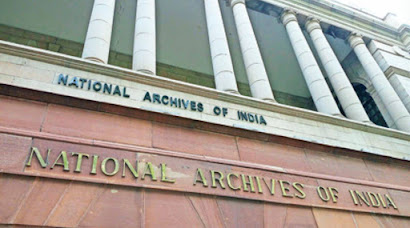Having used the British Library extensively just recently this shocks me. In the British Library no pens are allowed, only pencils. If you take a document they have three chits, yellow colour, green and blue. The three different groups of tables where the particular document which has the coloured chit can be taken, is based on its value. The manuscript, I took was for the yellow table, which is a highly valued document and no photos, Scan or Xerox is allowed but one can take notes on the lap top. One cannot leave this manuscript even for a short break and it has to be handed back if we leave the table even for few minutes. I was very impressed as to how the manuscript and documents are preserved for posterity. We keep complaining that we do not have the finances and resources to preserve our documents but more important, we do not have a sense of pride in preserving our past and treat the relics of the past in a very casual manner.
One would think that the guardians of the National Archives would make it their bounden duty to protect and preserve our nation’s written history. However, the horror story begins here.
Thanks to callous mishandling by staff and scholars alike, priceless documents have ended up dog-eared and annotated. Staff at the research room mandate scholars to number all the pages of a document selected for photocopying. Some scholars highlight portions important to them using coloured pens – on original documents. Fragile and aged archival pages are flipped through several times by each scholar; while photocopying, these are disengaged from the file, only to be put back in a haphazard manner. As a result, documents end up with multiple page markings, at times right in the middle of a priceless document. This defacement happens every day, on treasure that belongs to the next generation.

No comments:
Post a Comment